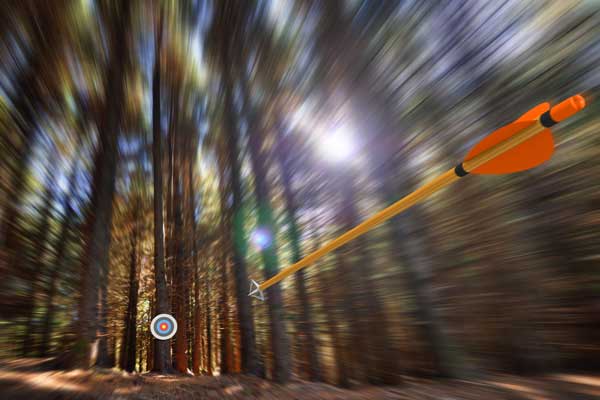Archery Shop in Gold Beach, OR
We’ve got the highest-quality archery supplies and an expert staff that can help you decide what supplies are best for you. Southern Oregon Archery, LLC has been giving our community a go-to place for archery since 2010, and we want to continue to build our expertise and services so that many more people can know the love of archery. Come check out our archery shop in Gold Beach, Oregon.
Questions? MEssage Us Today
Archery Shop and Services
Our shop and services allow you to get quality equipment from people with years of experience helping customers become skilled and responsible archers. If you’re new to this, don’t worry. We know it can be overwhelming to know what to buy and figure out what kind of maintenance you’ll need. That’s why we’re here: to give you the insight you need to become a better archer. Call Now!Bows (Compound and Recurve)
If you’re looking for compound bows or recursive bows, our experts can help you determine what equipment is best for your needs. We’ll guide you on the pros and cons of each bow and outline what you can generally expect from each. The staff at our shop must know the ins and outs and archery because if our staff can’t answer questions with knowledge and care, they aren’t reaching the level of expertise we demand of those we hire.Archery Pro Supplies
Our supplies are top-of-the-line, and whether you are just getting started in archery or you have been practicing archery for years, our supplies can give you precisely what you need. If you are a hunter or just like the sport of archery, we’ve got the goods for you.Accessories
Archery doesn’t require just bows. You also must ensure you have all the accessories you need to succeed. We keep our stock up to date to reflect the demands and technology of archery as needed products come onto the market. We also have tried and true products, which have long been the gold standard in archery.Bow Maintenance and Repair
Bow maintenance services ensure that your instrument is in the right condition to be used accurately and safely. We can repair your bow so that you know you are shooting as well as you can. We can also give you lots of tips on how to extend the life of your equipment so that you don’t need so much upkeep and repair.Archery Range
Our archery range is the best place in Southern Oregon to practice shooting arrows. With 8 lanes and a 30-yard range, we’ve got the space you need to practice. No matter what ability level you’re currently at, we’ll help you go to the next level. Even if you just want to try out this wonderful sport, our range is perfect for you.Archery Lessons
We offer lessons for not just advanced archers but also beginners. With eight lanes at our Central Park location, our 30-yard indoor archery range is a great place for lessons and the public to hone their skills. Our lessons cost $50 per hour, and we offer rentals starting at $7 each hour.How long can a bow be left strung?
How long can a bow be left strung? If you want to get the best and longest use from your bow, you must learn how to take care of it properly, and part of caring for your bow is knowing how long you can leave it strung without doing any damage. The best answer to this question is to unstring your longbow or wooden recurve bow whenever you have finished using it, but when they are made of synthetic materials, you can get away with leaving them strung for three weeks. Meanwhile, compound bows can be strung indefinitely, but it is still ideal to unstring your bow after each use. Modern materials make the bows much stronger and resistant to fatigue, so synthetic materials allow you to leave your bow strung, but it still is good to have good habits around your bow, particularly if you have other bows that are made of wood or composite materials.What are the five rules of archery?
There are many safety rules that you should keep in mind when you are learning or practicing archery. These are non-negotiable. While there are many safety tips you should keep in mind, here are five of the top rules you should follow.- Always make sure that you are shooting in a safe environment and that you do not nock your arrow when you are not in a safe environment. A safe environment means that you are aware of your surroundings and what is around your target. You are also aware of what is happening around you before you shoot.
- Protection is important. Having an arm guard and finger protection is a great way to keep yourself safe and able to do more shooting.
- Do not dry fire a bow, which means that you should never let go of the bowstring when you have not nocked an arrow). You can hurt yourself if you do this or damage the bow.
- Don’t let your emotions get the best of you and never use substances while shooting an arrow. When you’re in an altered state, whether that is because of heightened emotions like anger or mind-altering substances like alcohol or drugs, you need to be safe first. Make sure you don’t let your mood overpower you, and never shoot an arrow when you’ve used substances like alcohol. Even if you think you are lucid enough to do so, alcohol and drugs impair your response and motor skills.
- Never point your arrow at another person. Even if you are doing so in jest, someone can easily get hurt if an accident happens.
Is it better to restring a bow or buy a new one?
This is a matter of personal judgment. How often you have to replace your string will change based on factors like how often you shoot, what kind of bow you are using, and the types of arrows you shoot. However, there are signs that indicate you may need a new string. For example, frayed, dry, or fuzzy strings should be replaced. Generally, manufacturers say that strings should be swapped after two to three years, but don’t just assume two or three years will be right for you because even environmental conditions like humidity can wear down your string
